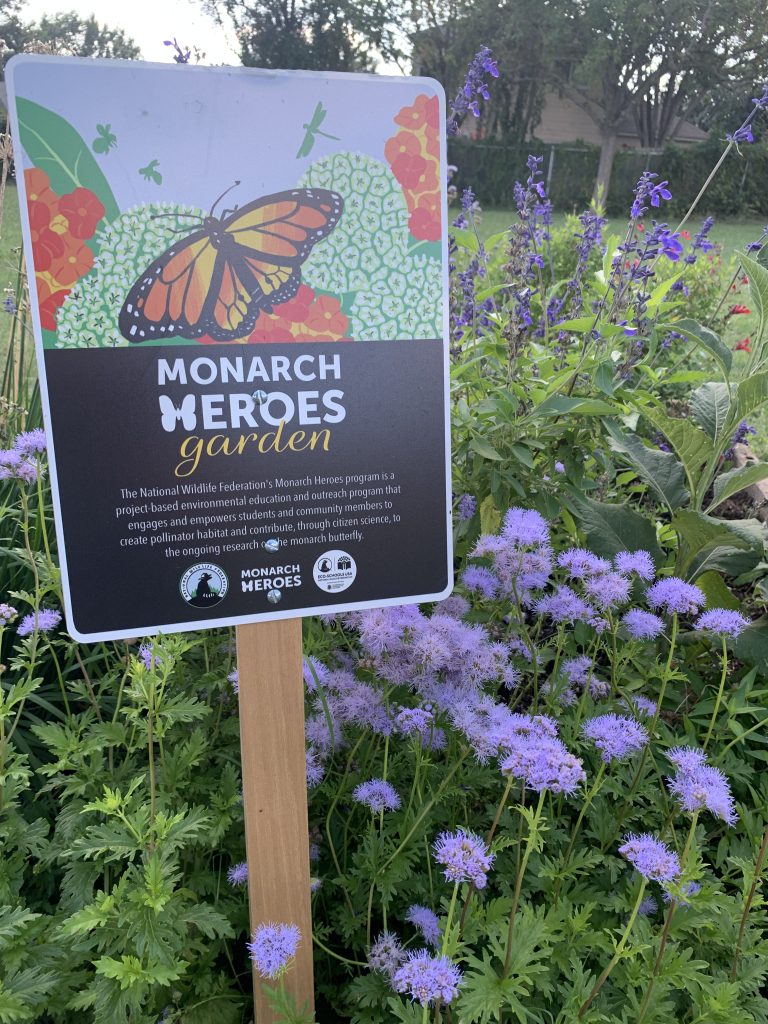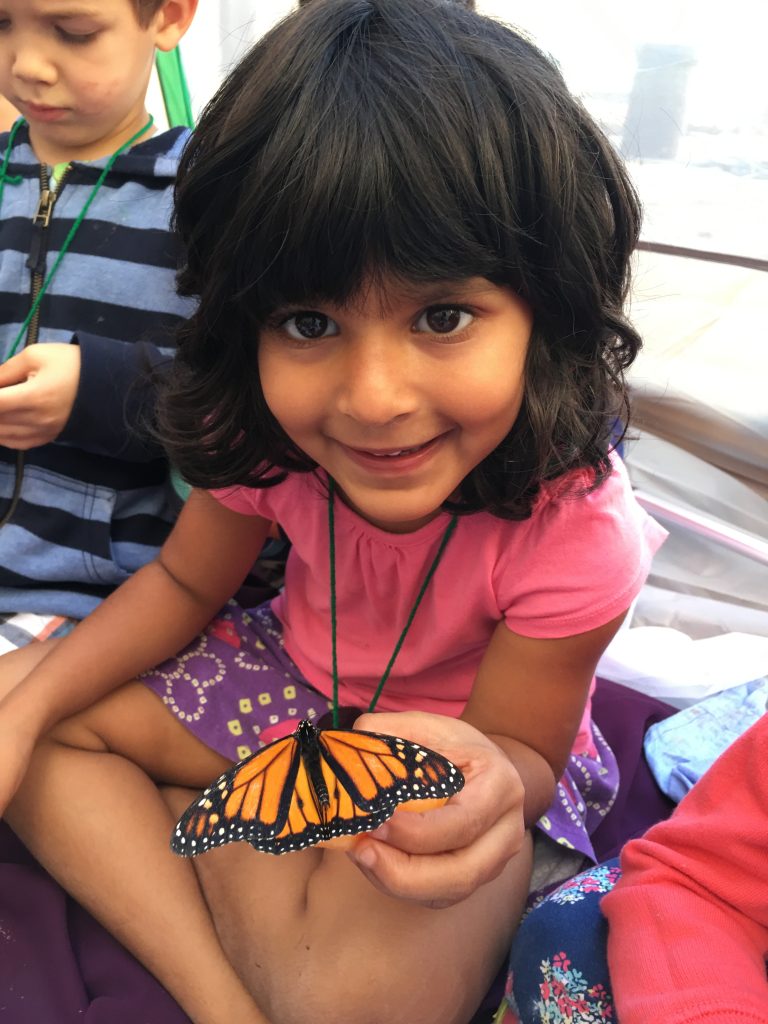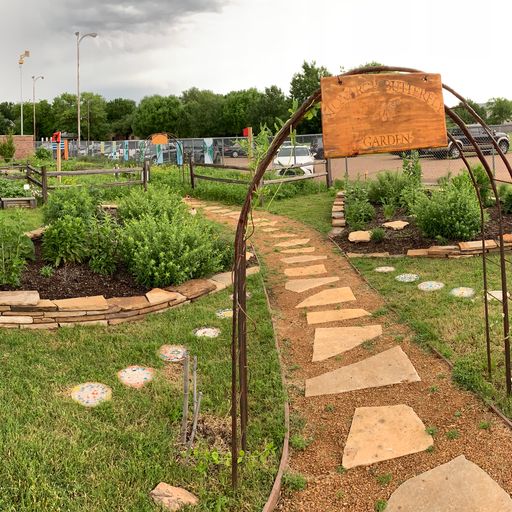Worthy Convos: Creating Butterfly Snack Stops with Monarch Heroes
If you thought Texas highways were just for vehicles, you are mistaken. Twice a year, the Lone Star State provides important migratory paths for monarch butterflies venturing between their breeding grounds in the north and their overwinter grounds in the south. And like any successful road trip, snacks are essential. As such, The National Wildlife Federation (NWF) has launched Monarch Heroes, a two-year, K-12 program dedicated to creating milkweed habitats for these magical creatures whose numbers are on the decline. The program recently received funding from North Texas Community Foundation to support its launch in eight campuses across Fort Worth Independent School District. We talked with Marya Fowler, regional director of education for NWF, to learn more about Monarch Heroes.

Butterflies are just about the sweetest and happiest creatures of the insect world. Why are monarchs so essential to Texas wildlife?
Monarch butterflies are the state insect of Texas. They are an iconic species that has captured the imagination of generations. Adults will often tell stories of seeing monarch butterflies migrating in clouds when they were children and yet today they rarely see them. The eastern migratory monarchs are essential to Texas wildlife because they are a flagship species whose habitat is shared by so many other wildlife species including grassland birds, migratory songbirds, many other pollinators and small mammals. When people rally behind planting habitat for the monarch butterfly, they are also creating habitat for hundreds of other species.

Photo courtesy of The National Wildlife Federation’s Monarch Heroes
What are kids learning from creating milkweed habitats? What other nectar-rich plants are essential for adult monarchs?
Kids are creating both native milkweed and native nectar habitat. On school grounds, both are equally important for the monarch butterfly. One of the key things is to use native plants. Children are learning that it is important to use native plants as a way to support native wildlife because they co-evolved together, creating a self-sustaining ecosystem. We also teach children that using native plants helps to conserve water and to eliminate the use of pesticides. Children learn that native milkweed specifically is essential because milkweed is the monarch butterfly’s only larval host plant. If we don’t have milkweed on the ground, these migratory monarchs will not be able to continue their northward, multigenerational migration from Mexico.
Monarch butterflies are fascinating because of their unique, multi-generational migration, which begins when monarchs leave their overwintering grounds in Mexico. Texas is one of the first places monarchs stop to lay eggs on milkweed creating the first generation of migrating monarchs. Each successive migration continues the journey north. Their journey back south through Texas is just as important. Monarchs must travel up to 3,000 miles to reach their overwintering grounds in Mexico. Native, nectar-rich plants will provide the nectar needed to build up fat reserves to last them though the winter.
Is there a certain soil type or environment that’s perfectly suited for milkweed?
There are many different varieties of native milkweed, and they all have different water and soil requirements. For example, antelope horns (Asclepias asperula) prefer well-draining rocky or sandy soils of prairies, pastures, plains and hillsides. Swamp milkweed (Asclepias incarnata) in contrast, and as its name indicates, prefers soils nutrient rich and wet soils, and will thrive in heavy clay soils. As with all native plants, it is important to know the soils and climate of the eco-region where you live so that you can select the appropriate native plant for your site.

Photo courtesy of The National Wildlife Federation’s Monarch Heroes
How did this program start?
In 2014, the population size of the monarch butterfly at their overwintering grounds in Mexico was at an all-time low, causing several conservation groups to petition the USFWS to list the butterfly as an endangered species. An alarm bell sounded and many conservation organizations, NWF included, adopted an all hands-on-deck approach to help recover the species. NWF’s South Central Regional education programs took note and, in 2015, we launched the Monarch Heroes program in ten schools split between Austin and Houston. When we launched, we were confident that the program would be a success because of the parallel need in the education and health fields to address attention deficit disorder by connecting children to nature. We decided to concentrate our efforts in Title 1 schools in urban centers where access to nature is not equitable. We are now in over 230 schools across the state of Texas serving approximately 25,000 students.
NWF is one of the oldest conservation organizations in the U.S. What other programs and efforts are unique to the South Central Region?
NWF’s South Central Region encompasses the Gulf states, parts of the Great Plains and Southeast, and stretches to Puerto Rico and the Virgin Islands. To meet the needs of this vast diversity of land, water systems, wildlife, and communities, NWF’s regional programs and the programs of our affiliate organizations are strategically focused for local impact as well as the development of scalable solutions. Through our additional educational programming (Eco-Schools USA, Student Climate Resilience Ambassadors, and Earth Tomorrow), we engage thousands of students in both Texas and Georgia in outdoor learning, understanding watershed health, exploring career pathways and providing more equitable opportunities for young people to gain an appreciation and understanding of the natural world around them.
Our Texas Coast and Water Program (through our coalition-based Texas Living Waters Project https://texaslivingwaters.org/) advances water conservation and protection of the state’s prized rivers, estuaries and coastal bays for the benefit of people and wildlife. The Region’s Gulf Program leads efforts to restore estuaries and coastal habitats throughout the Gulf of Mexico with a focus on mitigating coastal land loss in the Mississippi River Delta (https://mississippiriverdelta.org/), advocating for iconic Florida wildlife, and strengthening coastal resilience across the five Gulf states. and In the Southeast states, we work tirelessly to restore the historic range of longleaf pine on private forested lands while protecting wildlife habitat. Our newest program, Climate Resilient Habitats, launched in 2021, seeks to restore urban, rural, and roadside habitat and builds on the success of six years of monarch and pollinator conservation work in Texas. One such effort, the Monarch Stewards program (https://www.nwf.org/monarchstewards) launched in 2018 and has provided thousands of Texas volunteers with the skills and knowledge needed for conservation of monarchs and all pollinators.

Photo courtesy of The National Wildlife Federation’s Monarch Heroes
How will this grant improve your program operations?
Increased support of this type gives more credence to our program overall and will help us as we continue to develop partnerships in the Fort Worth metroplex. For example, FWISD, with whom we are currently entering into a formal partnership, was excited to learn that both the North Texas Community Foundation and the Rainwater Charitable Foundation are supporting Monarch Heroes. This grant will also help increase our overall funding for the program, which will increase our capacity to hire a new staff person and to serve more schools with the same degree of excellence.
Do you have a favorite caterpillar or butterfly fact?
A female adult butterfly lays between 300-500 eggs in her lifetime.


 Sign in
Sign in

